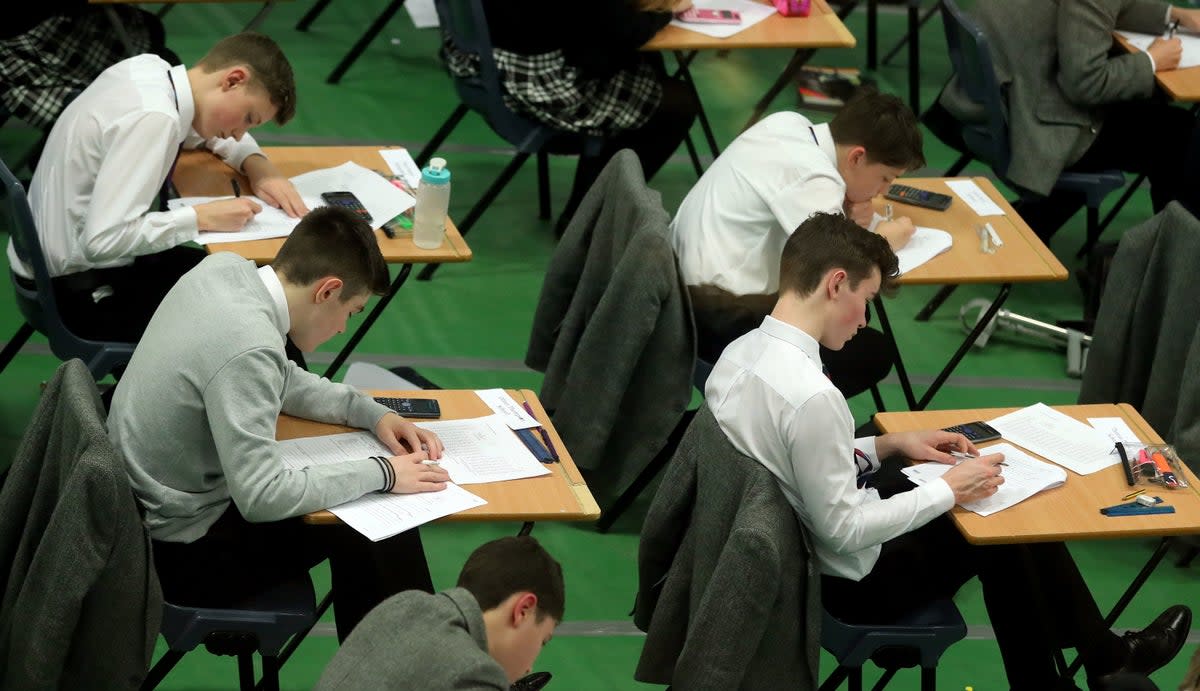GCSE results day 2022: What do the 1 to 9 grades mean and what are the boundaries?

Summer holidays from school come with both the joy of freedom and the dread of judgment – that’s right, results day.
As secondary school students find out how they fared in the hands of examiners, it’s out with the alphabet and in with the number system.
A* marks the top of the old system many of us are used to but the new system and its boundaries have changed in recent years. To clear up the confusion, here’s the official grading system for A-Levels, GCSEs and the grade boundaries.
When are A-level results sent out?
A-Level results day falls today, with grades typically available to collect from 8am. Times vary from place to place, however, grades are generally under embargo by exam boards until 6am.
Schools and colleges will already have told you if it’s possible to receive results by email or post. If you’re receiving them by email, they should drop into your inbox from 8am, and results sent in the post should arrive with the rest of your mail.
A-Level grade boundaries
CCEA grade boundaries
AS and A2 grade boundaries for CCEA students can be found here.
Pearson Edexcel grade boundaries
Pearson Edexcel grade boundaries were at released at 6am this morning.
A-level Pearson Edexcel grade boundaries can be found here.
OCR grade boundaries
OCR grade boundaries were released at 8am this morning.
The A-level grade boundaries for OCR can be found here.
AQA grade boundaries
The grade boundaries for AQA were released at 8am this morning.
The AQA A-level grade boundaries can be found here.
What time does Ucas Track update on A-level results day?
Ucas Track updates between 8am and 8.30m on results day, after being frozen in the days leading up to it.
To access Ucas Track you will need your personal ID and password that was used when applying.
Why is there a new GCSE grading system?
The current scale allows for a wider range of grades in the top tier of results. There is also a distinction between old GCSEs and new, more challenging ones.
The Office of Qualifications and Examinations Regulation said: “GCSEs in England have been reformed to keep pace with universities’ and employers’ demands. They are based on new and more demanding subject content but are still suitable for the same wide range of abilities.
“It also has higher grades compared to the old A* to G grades, to give sixth forms, colleges, universities and employers the opportunity to better distinguish between students of different abilities.”
How is the new GCSE grading system different and how does it compare?
Since 2017, the A*-G sliding scale has used a number system. New grades are marked from nine to one, with nine as the highest grade and one as the lowest.
Grade nines will exceed an A* mark and make up about 20 per cent of grades seven and above.
Marks nine to seven cover A*-A, six to four for grades B-C and three, two and one for D-G.
Grade U will remain the same.
What are the new boundaries?
As mentioned, grade nine is for students who have done outstanding work and, of the entire cohort, only five per cent of students will earn a nine. With four as the standard pass and five as a strong pass, this will make it easy for employers and future schools to draw comparisons between the old and new systems.
Where can I find the GCSE grade boundaries?
AQA GCSE grade boundaries
AQA grade boundaries can be found HERE.
OCR GCSE grade boundaries
OCR grade boundaries scan be found HERE.
CCEA GCSE grade boundaries
CCEA grade boundaries scan be found HERE.
Edexcel GCSE grade boundaries
Edexcel grade boundaries can be found HERE.
WJEC GCSE grade boundaries
The grade boundaries for exams set by WJEC can be found HERE.
When is GCSE results day 2022?
This year, results day falls on Thursday August 25.
See below for the entire new scale:
· 9 = High A*
· 8 = Low A* or high A
· 7 = Low A
· 6 = High B
· 5 = Low B or high C
· 4 = Low C
· 3 = D or high E
· 2 = Low E or high F
· 1 = Low F or G
· U = U

 Yahoo Movies
Yahoo Movies 
